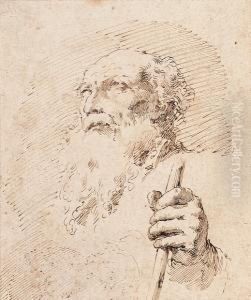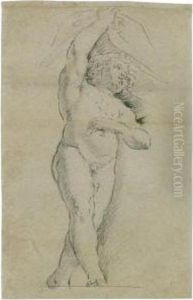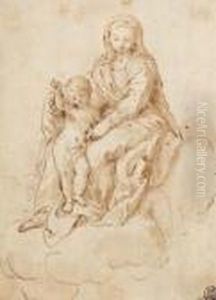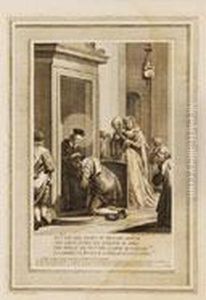Pier Antonio Ii Novelli Paintings
Pier Antonio II Novelli was an Italian painter and engraver who lived during the Baroque period. Born on February 2, 1691, in Venice, Italy, Novelli was immersed in an environment rich in artistic tradition and innovation. His family had a strong artistic background which undoubtedly influenced his decision to pursue a career in the arts.
Novelli received his early training from his father, Pietro Antonio Novelli, who was also a painter. Under his father's guidance, he honed his skills and developed a style that blended the influences of the Venetian school with the emerging Rococo sensibility. His work is characterized by a lightness and elegance, as well as a keen attention to detail and color, which were typical of the Rococo era.
In his career, Pier Antonio II Novelli worked on a variety of commissions, including religious works for churches and decorative pieces for Venetian nobility. He is known for his altarpieces, frescoes, and oil paintings, which often featured religious and mythological themes. Novelli was also an accomplished engraver, and his prints contributed to the dissemination of his style and the Rococo aesthetic.
Despite his successful career, Novelli did not gain the same level of fame as some of his contemporaries. Nevertheless, his works were appreciated for their grace and artistic quality during his lifetime. Novelli's paintings are characterized by their dynamic compositions and the sense of movement they often convey, as well as their rich color palette and the delicate rendering of figures.
Pier Antonio II Novelli passed away on January 15, 1762, in Venice. His legacy, while not as widely recognized as some of his peers, remains an important part of the tapestry of 18th-century Italian art. His works can still be seen in various churches and museums, offering insight into the transition from the grandeur of the Baroque to the more playful and ornate Rococo style.




